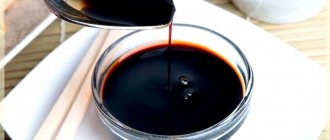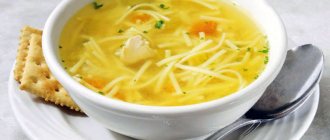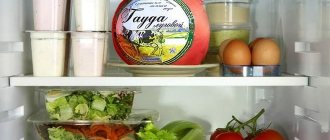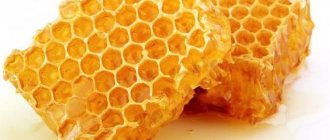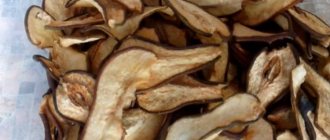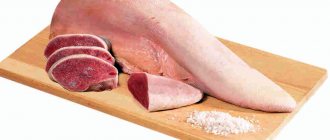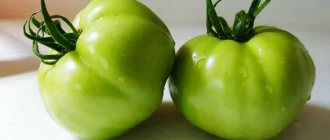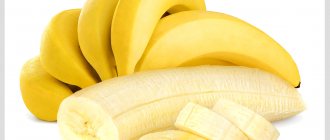Milk or kefir mushroom - zooglea - is called Indian, Chinese or Tibetan. It does not have a fruiting body; in appearance it looks more like overgrown lichens, sticky rice or cauliflower. The product is tasty and healthy - it quenches thirst, replenishes the body’s vitamin and mineral reserves, and normalizes digestive processes. The white, rubbery substance is a colony of organisms, yeasts and bacteria that requires special care. If it is not provided, the living organism will die. And if you preserve it correctly, you can use it even after a break.
Mushroom care and storage
In order for the Tibetan drink to retain its beneficial properties and special, interesting taste, it requires attention and daily care. Zooglea feeds on live milk, not pasteurized. It is better to purchase cow or goat milk from farmers, but if this is not possible, you will have to be content with a product with 5-6% fat content from soft store packages with a short shelf life.
Attention! The taste of the drink largely depends on the quality and type of milk. If you have not used the fungus before, it is advisable to first experiment with the raw materials for production.
Making a drink
Care for growing Tibetan mushroom from the first use:
- Place 1 tbsp in a clean 0.5 liter jar. l. zooglea and pour 200-250 ml of milk heated no higher than 24-25°C. It is not necessary to boil. If there are doubts about the quality of a farm product, it is better to refuse it.
- The neck is covered with gauze folded in several layers and left for a day in the kitchen at room temperature.
- The resulting kefir is poured into a prepared container through a plastic sieve and mixed with a wooden spoon.
- Rinse the contents of the sieve with running cool water, and rinse the jar thoroughly so that no milk marks remain on the walls.
Attention! It is advisable to drain the finished drink at the same time, then it will not overflow.
When the amount of starter increases, it is divided into portions. One is left for fermentation, the second for growing. You need to wash and pour the milk mushroom every day, otherwise it begins to darken - it turns brown and loses its beneficial properties. It is very difficult to revive, most often the living culture dies.
Knowing how to store milk mushroom and use it correctly, you can organize a “farm” and provide friends and acquaintances with a valuable product. To speed up the proliferation of mycelium, the starter is filled with richer milk or cream. The increase is significant - from one tablespoon within 4 weeks you can get 1 liter of zooglea. It is washed, divided into portions and distributed to everyone.
Kefir grain problems
If you take care of the mycelium, following all the recommendations, but it does not grow, you cannot get tasty thick kefir, perhaps it has become “sick.” Development is negatively affected by overheating from elevated room temperatures. To restore vital activity, more comfortable conditions are created for the starter. Wash with soda solution (1 teaspoon of soda is dissolved in 1.5 liters of boiled or filtered water), and place the container with the mushroom in a cool room, if possible. Recommended temperature is 10-14°C.
Rinse daily as usual. The drink can be consumed only after the fungus has recovered.
Zooglea begins to deteriorate if the liquid with which it was washed or the milk for filling is accidentally overheated. Souring has a negative effect if the leaven is left to sit for too long.
You should not rush and wash the kefir grains at the growth stage - earlier than after 24 hours, until the kefir has thickened enough. The culture will weaken.
How to Dry Pistachios If They're Damp
For a long time I thought that pistachios were impossible to find raw. After all, they are sold everywhere fried and salted, and the most I found was unsalted fried. But then in my hometown of Irkutsk I found raw pistachios! True, their price is such that you can’t get much. More than 600 rubles/kg, I don’t remember the exact price. But their quality is excellent - fresh, germinates quickly, and delicious!
I imagined that raw pistachios would be very different from the roasted ones we are all used to, just as roasted and raw peanuts are very different. But they turned out to be very similar, also with a pronounced pistachio taste. Awesome thing! If it weren't for such a high price, I would eat raw pistachios every day.
They are sold in shells, slightly cracked. Externally, raw pistachios are very similar to fried ones; they are almost indistinguishable. Look at the photo to see what raw pistachios look like in shell, peeled, soaked and sprouted.
Some facts about pistachios:
— Pistachios (Pistácia) belong to the Sumakh family (Anacardiaceae).
— Pistachios are considered drupes.
— Distributed in the Mediterranean, Northeast Africa, Western, Central and Eastern Asia. Some types of pistachios are native to Central America.
— Pistachio trees can withstand temperatures not lower than -25 degrees. They are resistant to drought, love light, grow on gray soils, on mountain-steppe brown soils, on cliffs and slopes.
— The fruits of pistachio trees ripen between September and November.
— Pistachios are grown in the largest quantities in Iran and the USA, as well as in Turkey, Syria, China, Greece, Afghanistan, Tunisia and Italy. Pistachios also grow in the Caucasus and Crimea.
— In some varieties of pistachios, the shell itself cracks when ripe, but in others it does not, so this is done mechanically.
— Pistachios are called 'magic nuts' because they contain a lot of useful substances, and the Chinese call pistachios 'lucky nuts' because when they crack, they resemble a contented smile.
We recommend reading: How to Store Garlic Before Planting in September
— It is believed that pistachios relieve fatigue and give vigor; they are also useful for high physical and mental stress. They also have a beneficial effect on the brain.
— Pistachios reduce susceptibility to heart disease, perfectly improve the functioning of the cardiovascular system and relieve heart palpitations.
— Pistachios improve liver function, help cure jaundice, relieve liver and stomach colic, treat anemia and ulcers, are very useful for diseases of the respiratory system, enhance sexual potency, improve sperm quality, increase the mobility and vitality of male germ cells.
— Pistachios are very rich in various vitamins and microelements. In particular, they contain a lot of vitamin B6, phosphorus, magnesium, copper, manganese, potassium, etc.
— Pistachios improve vision and reduce the risk of retinal dystrophy.
- Reduce the risk of cancer.
— Slow down the aging process of the body, promote cell growth and renewal.
— Pistachios also clear bile ducts from blockages.
— Composition of pistachios per 100 grams:
Fiber: 10.3 g
Calorie content: 557 kcal.
How to germinate pistachios:
You need to soak them overnight or for a day, right in the peel. After this, peel the pistachios and place them in damp gauze or a napkin (even toilet paper folded in several rows will do). You need to make sure it doesn't dry out and add a little water if necessary. The pistachios will sprout in a day or two, depending on their freshness.
How to germinate pistachios:
Storage conditions for milk mushroom
The container with the future kefir cannot be closed with a tight lid - the zooglee needs a constant flow of air, a living organism breathes. It will not be possible to store milk mushroom on the windowsill - it does not like bright light, especially direct sunlight.
You cannot keep Tibetan mushroom in containers or containers made of metal or food-grade plastic - only in glass jars. They are washed with baking soda - modern synthetic detergents are not suitable for cleaning. Do not use metal kitchen utensils when preparing kefir. The sieve and spoons should only be made of wood, silicone or food-grade plastic.
They drink the drink for a course of 2-3 weeks, and then rest for 10-20 days. During the break, a gentle storage method is used, without preservation. It is enough to pour the starter with milk, half diluted with boiled water, and put it in the refrigerator. After 5 days, the zooglea is washed again, allowed to rest for a day at room temperature, and only then put back in the refrigerator. When cooling, life activity does not stop, but only slows down. A living organism does not fall into suspended animation, but continues to function slowly.
Attention! Kefir grains should not be left in the refrigerator for longer than 5 days.
The drink that was obtained while the starter was stored in the refrigerator is not consumed as food. If it is a pity to dispose of it, it is used to prepare homemade cosmetics - masks for the face and body.
Long-term storage
You can preserve kefir grains for the duration of the holidays - up to 3 months - without milk, in dry form. True, before it is re-preserved and used again to make a drink, it will take time to restore its qualities.
To dry zooglea:
- Leave the water to settle in advance so that all the chlorine evaporates. Then it is boiled and cooled.
- The starter is placed on a sieve and washed. Leave to almost completely remove moisture.
- A sieve with a fungus is placed on a jar - water will flow into it, covered with gauze. Place it in the kitchen in a place inaccessible to sunlight. But at the same time, the air flow must be stable to ensure ventilation.
- To protect from dust, cover with gauze folded in several layers.
- After 3-4 days, the curd lumps harden and dry out, they are transferred to a dry glass jar, and the neck is tightened with a thick cloth.
Attention! Dried starter should be stored at room temperature, protected from light. Heating or hypothermia is not allowed.
It will take 2-3 days to restore the kefir mushroom. It is poured with milk in a ratio of 1 tbsp. l. for 200 ml. After 12 hours, filter the infusion through a sieve, repeat pouring again, and so on 2-3 more times. As soon as the drink acquires its usual aroma, the starter is washed again. Only now it can be used to make kefir.
Can it be frozen?
With this storage method, the beneficial properties are completely preserved. Another advantage of freezing is the restoration and treatment of partial damage to the mycelium.
The following signs indicate that the zooglea has deteriorated:
- an unpleasant musty or ammonia smell, even if it is barely noticeable;
- color change to brown;
- mold on the surface;
- mucus released during rinsing.
If you freeze the milk mushroom, after first washing and removing all pathogenic microflora and damaged particles, it can be brought back to life. After 1.5 months in the freezer, all pathogenic microorganisms will die, and the starter will be restored again.
Freezing rules
The zooglea is placed on a sieve and washed with running water. There should be no mucus or damaged rice tissue left on the surface. If some of them are flabby, “empty,” they are separated.
Then the mycelium is dried on a sieve, as already described: in a dry, ventilated place, without access to light, at room temperature, under gauze. If the dust cover cloth becomes slightly wet, it must be replaced. But the mushroom should not dry out completely - it is enough so that there are no water drops left on the surface and it becomes dry to the touch. A day is enough for this.
You can use another way to remove moisture - spread the mycelium in a thin layer on a paper towel and cover with another one. As soon as the paper gets wet, it must be replaced immediately.
Attention! A sign that the kefir mushroom is ready for long-term storage is that the lumps of rice do not stick together. If you hurry, later, when freezing, ice crystals will form from the droplets, which will damage the mycelium.
The dried mycelium is laid out in portions (no more than 1 tbsp). on plastic bags. They are hermetically sealed by tightening or tying, and for safety they are placed in another bag or wrapped in cling film. Then they are placed in plastic resealable containers and placed in the freezer. To prevent the bookmark from taking up much space, you can use food foil instead of containers.
Storage duration is 12 months. If the starter melts, it will spoil. Secondary freezing is unacceptable. Therefore, when you plan to wash the refrigerator, you should take special care of the zooglea - place it in a container filled with ice.
Defrosting the mushroom
There is no need to wait for the kefir grains to thaw. As soon as it is removed from the freezer, immediately take it out of the packaging and place it in cool milk. You can even take it a little less than usual. After another day, everything is drained, the starter is washed as usual and filled with the required amount of milk. The resulting drink can now be drunk.
How to fry pistachios
Pistachios are delicious nuts that differ from other nuts in lower calorie content and have a fairly rich vitamin composition. These nuts have a tonic effect and help with chronic fatigue and depression. They are also called “funny nuts” because of the effect they have and the cracked, smile-shaped shell.
Iranian pistachios are considered the most delicious. They are sprinkled on ice cream, added to baked goods, cocktails, meat and fish dishes, and salads. In the East, pistachios are used to make baklava, Turkish delight and other national sweets.
Nowadays pistachios can be bought at any store, but since all nuts contain a large amount of oil and quickly become rancid, it is best to stock up on fresh pistachios, which can be dried or fried if desired. Fresh pistachios are soft and have a milky taste. We are more accustomed to eating them cooked. In addition, fresh nuts do not last long, and after drying in the sun they can be stored for almost a year. Few people know how to properly fry pistachios.
To properly fry pistachios, according to some recipes, you must first soak them in salt water. This is for those who like their nuts soaked through with salt. A simpler process sequence looks like this:
Raw pistachios must first be peeled and peeled, then boiled for five minutes. Then drain the pistachios in a colander and let them dry thoroughly.
Place the peeled, boiled and dried nuts on a baking sheet in an even layer. Preheat the oven to one hundred and eighty degrees and place a baking sheet with pistachios there. Fry for about five minutes, then sprinkle with spices and salt. You can do without spices altogether. You can eat pistachios after they have cooled completely, during which time they will have time to absorb salt.
Frying pistachios at home is easy; if you wish, you can do it not in the oven, but using a cast-iron frying pan. Pistachios, as already mentioned, can be pre-soaked and dried, or boiled. The prepared nuts are poured into a frying pan, greased with oil and fried until golden brown, with constant stirring, then seasoned with salt.
We recommend reading: When to Remove Parsnips from the Garden
Frying pistachios in a frying pan is especially popular, as this method gives them a more pronounced taste. In addition, you can control the degree of “toasting”. If there is too much oil, place the nuts on a paper towel after frying. which will absorb excess fat.
Raw pistachios must first be peeled and peeled, then boiled for five minutes. Then drain the pistachios in a colander and let them dry thoroughly.
